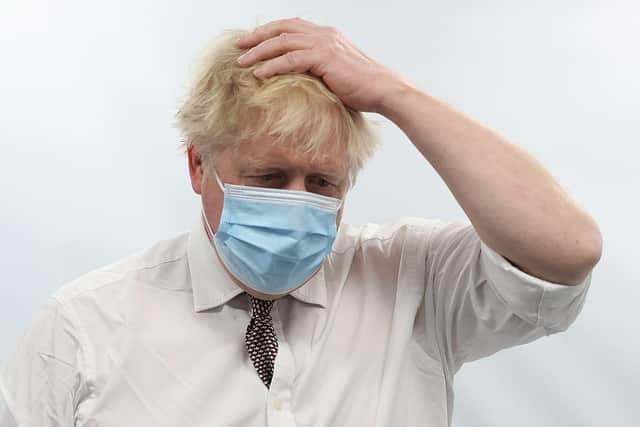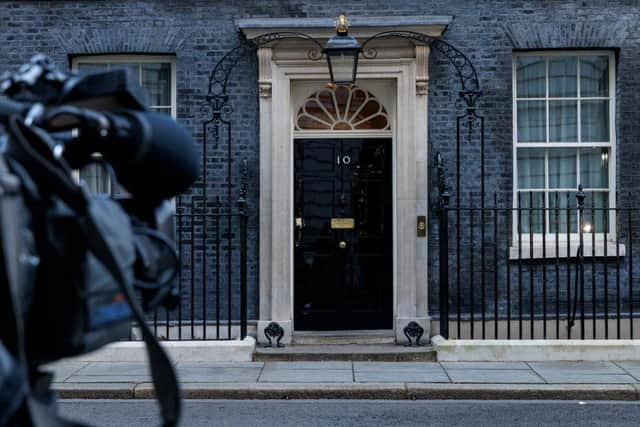Vote of no confidence: What is the 1922 Committee, who is Sir Graham Brady, and what happens with a vote of no confidence?
Monday June 6th saw enough Tory MPs requesting a vote of confidence in Boris Johnson to trigger a contest. Now, a flurry of resignations, including from one of Mr Johnson’s strongest supporters Rishi Sunak, has sparked calls for the rules to be changed to enable another vote.
Conservative MP Chris Loder has said the 1922 Committee will be “considering” that Prime Minister Boris Johnson recently survived a vote of no confidence and hinted that rules may be changed to allow another vote to take place sooner.
Advertisement
Hide AdAdvertisement
Hide AdThe Tory MP for West Dorset told BBC Radio 4’s Today programme: “Not necessarily today, but we know that there are forthcoming elections to the 1922 Committee executive. Of course, it is within the gift of the executive to make amendments to those rules should they so wish, and we are at a point of democracy within the Conservative Party itself to actually return an executive reflective of the views of the back benches.


“I have no idea who’s going to stand, I suspect we will hear a little bit more about that over the next day or so,” Mr Loder continued. “I certainly think now that those who stand for the 1922 Committee executive should consider that course of action now.”
Initially sparked by the controversy about parties and events held at Downing Street and in Government buildings, the release of Sue Gray’s report in full revealed the extent of the Downing Street parties and the behaviour of government officials. It also renewed fresh calls for Johnson to resign, ones that first began when it was revealed that the Prime Minister and Rishi Sunak will pay fines for their part in the illegal lockdown parties.
Following the release of the Sue Gray report in full, Mr Johnson maintained that he never lied to Parliament and has showed no signs of resigning, despite fresh calls for him to do so. One Tory MP even called on the rest of his party to withdraw their support from the Prime Minister in the House of Commons, with many Conservatives leaving the room during and following Mr Johnson’s statement.
Now that support from within his own party seems to be waning for the Prime Minister, how does the process actually work? Here’s what you need to know.


What is the 1922 Committee?
The 1922 Committee got its name from a meeting of Conservative lawmakers that took place 100 years ago, in 1922. Their actions saw the end of the coalition government at the time and the group has gone on to play a decisive role in Tory leadership since then, including sparking the resignation of Margaret Thatcher.
Today, the 1922 Committee is used to refer to a line of communication between Conservative leadership and rank-and-file MPs. MPs may write letters to the Chairman to state that they believe a change in party leadership is needed, known as letters of no confidence. If 54 letters reach the Chairman, then they must call a vote of no confidence.
If such a vote were held and the Prime Minister lost, they would then have 12 months of immunity from future no confidence letters. If they lose, a leadership contest would begin with the previous Prime Minister unable to run.
Who is Sir Graham Brady?
Advertisement
Hide AdAdvertisement
Hide AdSir Graham Brady is the current Chairman of the 1922 Committee and therefore only he knows how many letters have been received for sure.
However, some MPs do choose to go public, with seven calling for Mr Johnson’s resignation on Monday January 17th and a further 12 letters confirmed on Wednesday January 19th.
What happens with a vote of no confidence?
A vote of no confidence has now been triggered. If half of the MPs vote that they do not hold confidence in Mr Johnson’s leadership, then he will be ousted. However, as the rules currently stand, if Mr Johnson wins a confidence vote, he cannot be challenged again for 12 months.
Nonetheless, Mr Johnson has lost widespread support, both inside the House of Commons and out. As well as facing trouble on his backbenches, Mr Johnson also faced public backlash during the Platinum Jubilee bank holiday weekend, including being booed on Friday by some sections of a crowd during his arrival at a thanksgiving service for the Queen at St Paul’s Cathedral.
Tory fears about their leader’s standing among the public were also likely to have been further fuelled by polling carried out ahead of the Wakefield by-election by JL Partners. The survey found the Conservatives could lose the key battleground seat, which was one of tens of constituencies Mr Johnson took from Labour in the so-called Red Wall during his 2019 landslide general election win, by as much as 20 points to Sir Keir Starmer’s party this month.
Additional reporting done by PA.
Comments
Want to join the conversation? Please or to comment on this article.
